Northern Italy Backpacking Itinerary
This Northern Italy Itinerary will take you through the cities of Milan, Lake Como, Torino, Venice, Cinque Terre, Genoa, Bergamo, Verona, Dolomites, as well as Florence & Rome.
Table of Contents
ToggleThis Northern Italy Itinerary will show you many locations that you can pick and choose from to put together a plan that works best for you. Not everything has to be perfectly planned out with a route for each day and reservations at a specific restaurant. Instead, this itinerary will help you pick a route to travel across some of the best places in Northern Italy.
Budget backpacking is a fun way to explore and travel while also saving you some money. This route can be done on any budget, but many activities will be suited for travelers on a lower budget who still want to explore the beauty of the North of Italy.
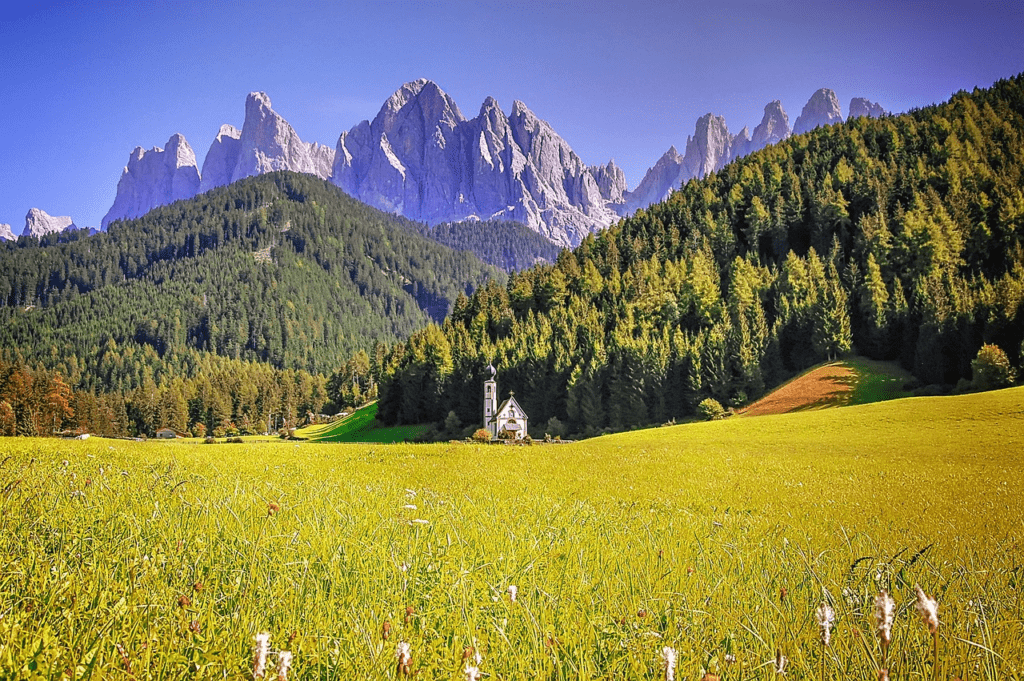
How long to stay for Northern Italy Itinerary
It depends on how much you want to see and what type of traveler you are. For a backpacker on a budget, moving around often can quickly eat into your budget. For a traveler with a larger budget, but a smaller time frame, moving between many cities can take away a lot of time that can instead be spent enjoying a few amazing locations.
For a quick look through Northern Italy, a week may suffice for experienced travelers that have a quick pace. To take in more of the atmosphere, a 10-day or 14-day northern Italy Itinerary would allow enough time to truly enjoy the atmosphere that the North has to offer.
I can suggest areas and cities to consider, what to do in each location, a recommendation on how long you should stay, and give a few routes that you can take for your journey.
What to Pack for Backpacking Northern Italy
For a backpacking packing guide, check out out the “Backpacking Packing Guide: Everything For Long Term Travel”
When is the best time to visit Northern Italy?
There are many holidays and times around the world where tourism will spike. With its rich history and culture, it is no wonder why Italy is one of the most popular travel destinations in the world. Even while recovering from lower tourism the last few years, Italy remains a very popular destination.
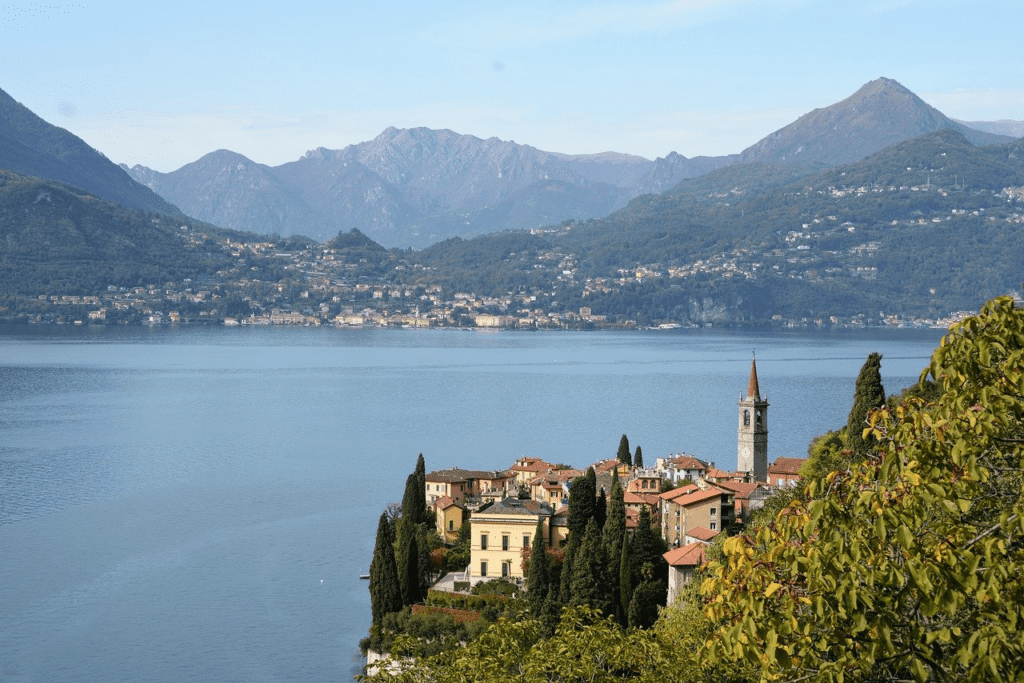
Northern Italy is often overlooked by non-European tourists, aside from the famous city of Venice. When going to the North, there may be less tourists in many of these locations compared to the center or the south.
If your main concern is budgeting and beating the crowds, going before tourism season can help you find many discounts and less congested views. If you can bear the cold, February is when the weather starts slowly warming up from the cold months of December and January.
Northern Italy in February will still average around 0C/32F and 10C/50F. For the snow loving Snowboarders and Skiers, January is even colder and will be a great time to enjoy the Alps.
If weather is a greater concern than crowds or budget, May to June is a good time to visit as the weather is the best. June, although busy, is a transition period between peak tourism times.
For those wanting to visit in a less heated time but still able to walk around without layers of clothes, September to October will be a better time to visit the North of Italy.
Transportation around Italy
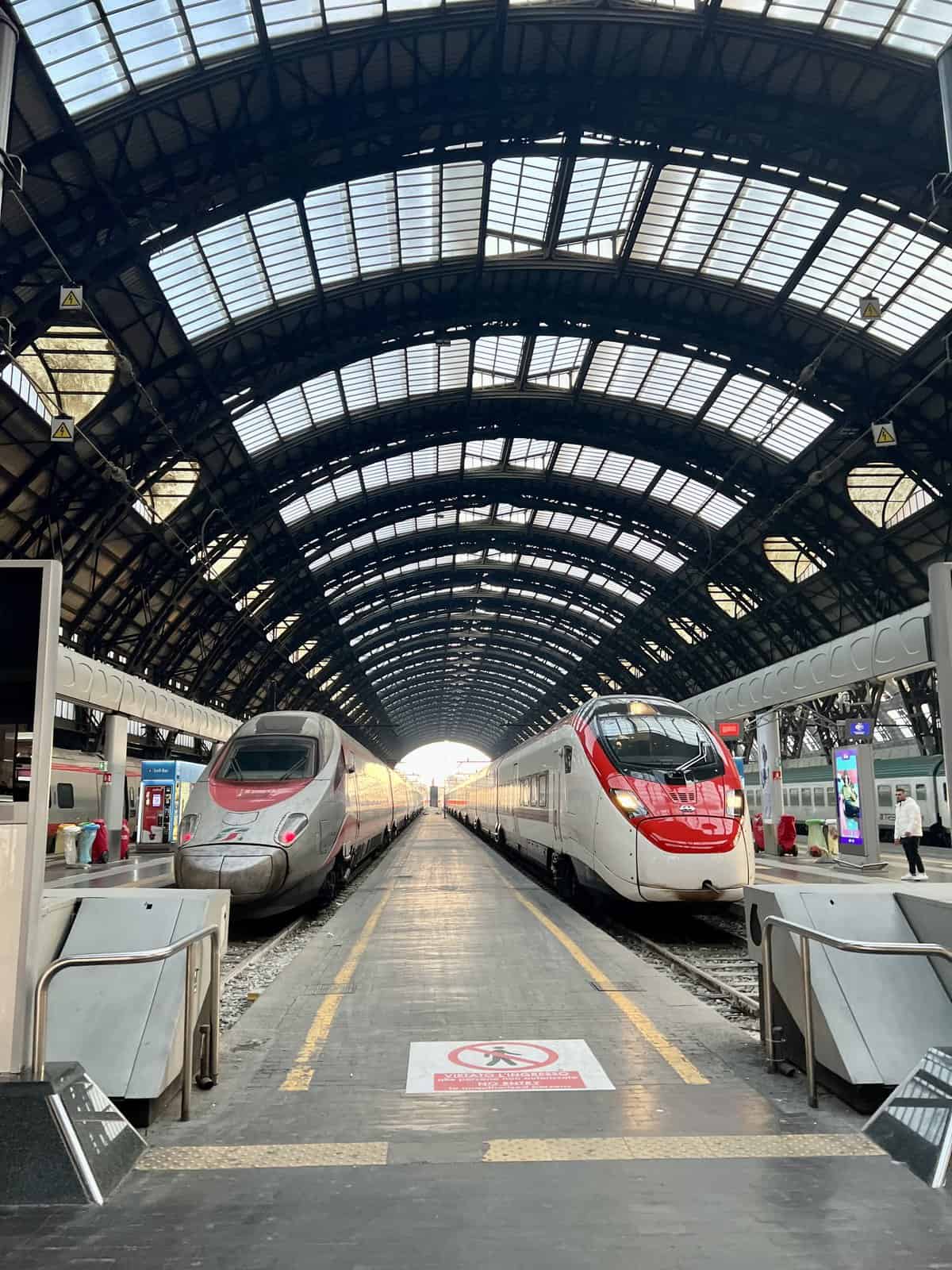
You’ll have no problem finding cheap public transportation between cities through trains and buses. I would recommend using 12go and flixbus to find the cheapest transportation between destinations. Within smaller towns, you’ll mostly rely on walking. In larger cities, there will be many systems such as buses, trams, train stations, and ferries.
Cities to visit in Northern Italy
- Milan
- Lake Como
- Cinque Terre
- Venice
- Torino
- Florence
- Rome
- Dolomites
- Genoa
- Bergamo
- Verona
Milan (2-3 days):
Milan is a great starting for your adventure through the North of Italy! It hosts large international airports making it easy to find affordable flights into Italy.
It’s quite a city, but you’ll notice that many locals moved to the city for work opportunities and prefer other places in Italy if money wasn’t an issue. With that in mind, you’ll notice that the prices in Italy’s economic city are a little higher, and you may be amazed by other unique cities in Italy as you travel around, but Milan is still worth a visit. Because of this, I would recommend it as a starting point, and not as much as an ending point if possible.

Being one of the biggest cities in Italy, you’ll have no problem finding things to do. You’ll have the modern amenities to get acclimated to the changes before you get deep into the heart of true Italian culture.
Milan being the fashion capital of Italy, you’ll have an amazing time looking through the multitude of malls such as the must see, Galleria Vittorio Emanuelle II. Even on a backpacking budget, it’s definitely worth seeing as it’s in the city center, near many other attractions like the spectacular Duomo Cathedral.
When people think of Milan, the Duomo is THE first thing that comes to mind. This will be the first of many great structures you’ll see in your journey across Northern Italy. Not to mention, these two must see attractions are free to visit which is great news for budget travelers.
You can take public transport to the Duomo and Galleria area, conveniently called the Duomo stop on the metro’s red colored line. From there, if you’re a walker, you can start your days journey walking around the city center of Milan from there and explore many sights.
If you’re new to Europe, just exploring the architecture will be quite spectacular as you go for a walk.
Milan also has great public transportation to and around the city, giving you many options to choose from for your next destination across Italy! Just know that the North of Italy is known to be more expensive than it’s counterpart in the South, and even the public transportation reflects it. A public transport ticket costs €2.2 as opposed to the €1.5 tickets you may find traveling lower down Italy.
However, a public transport ticket within the main city area will apply to the metro, buses, and trams for 90 minutes from the time it’s used. It’s a convenient way to get around the city, and you can get very far on just one ticket since you can bounce between transports.
You can purchase a public transport ticket in the metros, or at many corner stores and stands. Some ticket machines accept credit and debit cards, while others are cash only. You can get by with using a card for many things in Italy, but it’s a good idea to keep some cash on you.

*Budget Traveling Tip
If you’re on a true shoestring backpacking budget, but still want to get around, some people will leave their ticket at the metro exits after making their commute. You’ll find that many people will pick up these tickets and try to sell them at a discounted price, but if you’re patient, you could wait for a generous person to leave a ticket for you to use.
Sharing tickets may not be allowed, but if it isn’t allowed, it’s definitely not enforced as you’ll always have people trying to sell you used tickets as you try to pay for a new one at the ticket machines.
Knowing this, when you complete your commute, you can be a generous gentleman or lady and leave your ticket when exiting the metro if you don’t need to use a bus.
Places to Visit in Milan:
- Duomo Cathedral
- Galleria Vittorio Emanuele II
- Naviglio Grande
- Milano Centrale Railway Station
- Monumental Cemetery
- Bosco Verticale
- Castello Sforzesco
- Arco della Pace
Lake Como (1-3 days):
Lake Como is a short and cheap train ride away from Milan. Get away from the big city and experience one of the most beautiful lakes in the Italian Alps.

The Lake Como area will be more expensive than other areas, but you can make it a day trip from Milan, just to experience the glistening views from the lake and feel the charm of the town.
In the area, there are many towns to choose from. Popular tourist spots include Bellagio and Varenna. For larger towns, there are Como and Lecco. To get away from the large tourist bubbles that you’ve been in while exploring Milan, try for a quieter town such as Menaggio or Nesso.
You’ll have your initial train ticket from Milano to Como Lago Station will cost you
€5 on the Trenord Saronno line. From there, you can either stay the night in Como (which I would recommend on either entrance or exit of the Como area), or go straight to the public ferry terminal to book your ticket to the town of your choice in the greater Como area.
My personal route was a train from Milan to Como Lago Station, a night in Como, and then an early ferry to Bellagio for a day trip before taking a return ferry to Como and a train ride back to Milan. This was my personal route as I was using Milano as my travel hub for day trips since I could stay with family there.

If you have no ties to certain areas, I would recommend spending an extra night in one of the towns in the Como region and exploring further if you desire.
When you arrive in Como, I would recommend spending a day in the city and exploring the very walkable small area.
My favorite memory in Italy was sharing the spectacular view from the Volta Lighthouse with my godfather during sunset. You can purchase the cable car ride for €6.1 (increase from €5.5 recently), and then make your hike towards the lighthouse. The walk is quite steep at some points, but it’s quite a quiet and scenic walk through a small mountainous town of Brunate. If you go to Como, this is a must do, and something that I would regret skipping.
You could make a whole day of hiking the various trails, but the walk the the Volta lighthouse is something that I would not miss.
After finishing the cable car ride, you can find a place to eat or for some drinks outside, along the lake. If you’re really tight on the budget, just grab some snacks at a store and take a walk along the lakeside sidewalk.

Gelato is something that you can’t miss in Italy, and one of my favorites is Gelateria Lariana, conveniently located on the river walk near the ferry ticket area. You could start your tram ride up, take the hike to Volta Lighthouse for the sunset, make your way down for a lakewalk, and finish the hike at the other end in Gelateria Lariana.
In Milan, you may decide to try out some cafes and cook at your hostel or hotel for larger meals to save some money. Exploring the grocery stores in a new country is always quite interesting. New smells and sights fill the big concrete box. Well, in Lake Como, it will be worth the trip to a restaurant in a nice area to really soak in the views.
To explore the area, I would recommend walking around everywhere and finding interesting attractions along the way. There are many free attractions with great views such as churches, cathedrals, and villas with amazing food.
If you decide to splurge and stay for longer, you could do another short trip to Switzerland and explore the closest city of Lugano to feel the change in atmosphere. Both countries are in the Schengen area and fall under the same area for most visas. You could even leave Lake Como at the end of your trip in Italy and trail it into Switzerland from here if you are traveling throughout more countries in Western Europe.
Places to Visit in the Lake Como Area:
- Como Ferry Terminal
- Como Cable Car Station
- Volta Lighthouse
- Cattedrale di Santa Maria Assunta
- Gelateria Lariana
Bellagio (1 day):
Bellagio, the name may ring a bell. Probably the most well known town on Lake Como, known as an expensive area with beautiful villas overlooking Lake Como. Well, that’s not wrong.
Bellagio also makes a great stopping point, before heading to a town more North on Lake Como.

You can take the ferry from Como to Bellagio for €14.8 one-way, which is quite a fee when traveling on a tight budget. If you have the extra budget for it, and you like exploring by walking, I would recommend visiting for a day trip and taking a walk around the quiet and peaceful area.
To get the most out of your time, make sure to check the time table at the docks. When I visited in February 2023, there was one ride at 7:30am that I missed, and the rest of the rides were in the afternoon. Also note that weekend rides are less frequent, especially on Sundays and holidays.

Once you have a plan, just get there and walk really. There’s a lot of beautiful nature everywhere, and you get a peaceful break from city life.
Venice (1-3 days):
Venice, the images of a romantic ride in a rowboat with the glistening, colorful ,sunset… surrounded by crowds of tourists in one of the most famous cities in the world.

Venice is known for its unique canal system connecting the city. There’s also a lot of history to see. There’s some main roads that you can follow that will lead you to bigger areas such as the “Piazza San Marco”, but there are numerous back roads and alleyways that you can explore as well. Be warned, Venice is very busy so getting an early start is highly recommended.
Recommended Route for a Day Trip to Venice
When reaching Venice by train to Saint Lucia Station, you’ll have two ways to go when exiting the station. There will be a bridge, almost straight out (a little to the left), heading South. There is also a walking path perpendicular to this before the bridge, which you can take exiting left, to the East, and follow the large walking path.
From here, you can explore and get lost in the side streets and alleyways, but heading in the general direction of a loop towards Saint Mark’s Basilica, and then heading back in the opposite way of which you exited the station from.
Don’t forget to visit Rialto Bridge for the best views and pictures of Venice!
With that said, I personally only took a day trip to Venice, but if you have the time and budget, I would recommend staying at least a night. It is seen as a more romantic couple location by the media, but Venice is quite a spectacular sight to see, and I would highly recommend visiting, even as a solo traveler just to explore the area and get lost in the maze of back streets and alleyways.
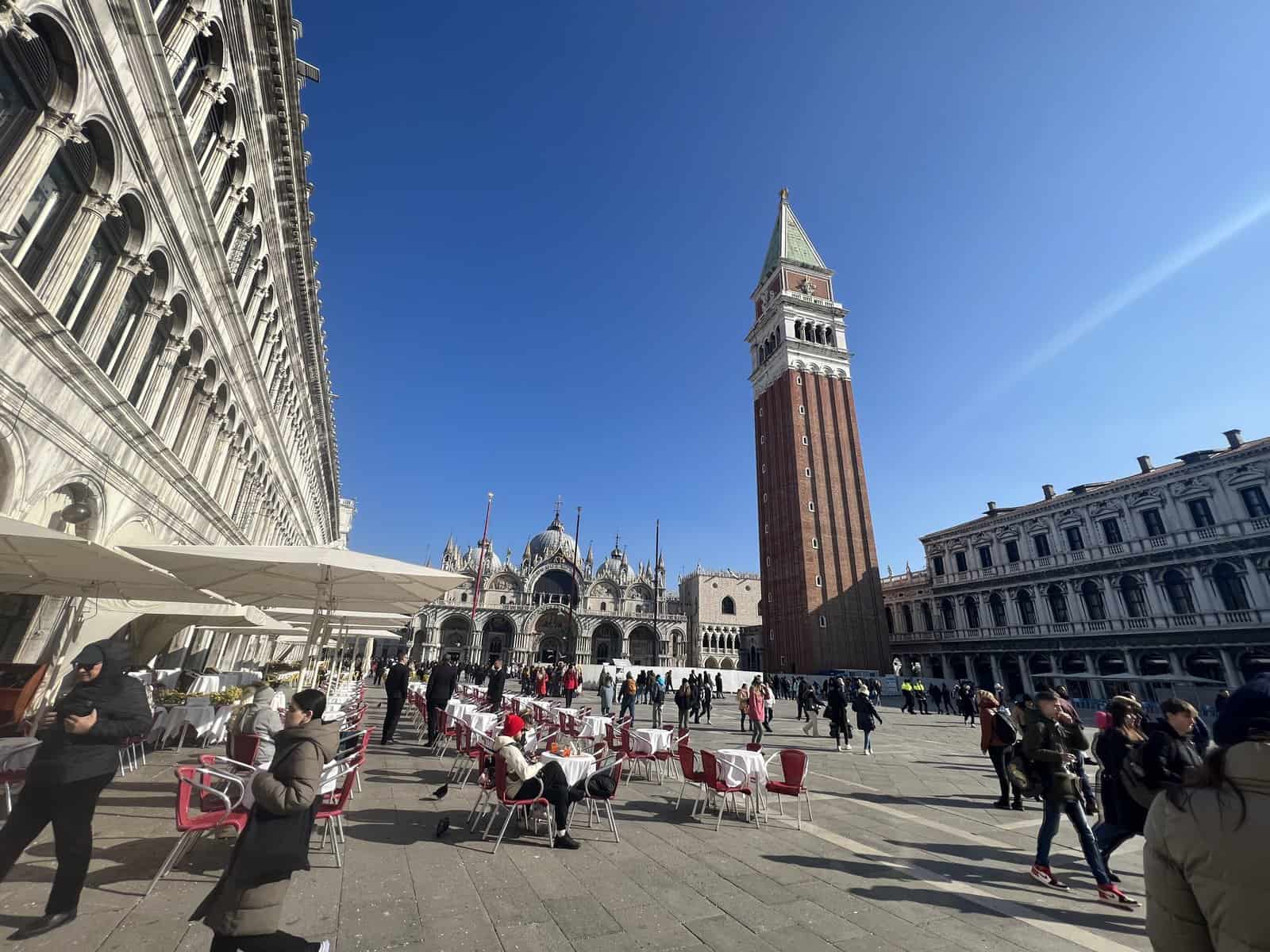
Venice is also a great way to finish your travels with a bang! Be careful though. It’s very easy to spend a lot in Venice. It may be worth it to finish your trip strong, but if you are a true budget traveler, there are still ways to save.
If you are planning on exploring quite a lot, the vaporetto is a greatwater ferry to use. You can buy day passes for all kinds of land and sea transport online. A single ticket starts at €7.50, a day pass is €21, and a 3 day pass is €40.
I personally came out of the Saint Lucia Station from Milan’s Central Station and headed East to make two laps around the Islands for the day by foot. It’s easily doable, and something I would definitely recommend unless you are on a more romantic getaway and would like to experience floating down the canals.
Places to Visit in Venice:
Torino (1-3 days):
Turin, is a well put together town with a beautiful mountain range for a background, and a clean stream of water connecting the city.
Its main attraction for tourism are the museums and rich history, but the combination of a beautiful and busy downtown, clean street art and graffiti throughout the residential areas, and nice nature connected to the concrete jungle gives Torino quite a charm.

Turin would be my choice if I were to live in a city in Italy.
To get to Torino, it takes 2 hours and around €12 each way, depending on the time and train you take. You can easily spend multiple days in Torino with the amount of museums. I had a limited time in Turin, and left the Egypt Museum with only two hours to explore, and ended up running out of the building to catch the train without even finishing the whole exhibit.
There are many many museums in Torino. There’s a museum for everyone here. So many that some have a discounted bundle ticket if you wish to visit multiple. The three most popular museums would be the Egyptian Museum, Cinema Museum, and Automobile Museum. If any of those are of interest, it may be worth adding Torino to your travel Itinerary.
Places to Visit in Turin:
Italian Riviera / Liguria Region (Cinque Terre, Genoa):
The Liguria region has a stunning coastline with the main two attractions being Genoa, which is a larger port city, and Cinque Terre, which is a conglomerate of 5 small villages along the Italian Riviera.
Visiting the Italian Riviera is a great option if you want to visit a coastal area while on your trip. I would say however, the Liguria region is entirely optional for this itinerary.
I would highly recommend it if you have more time and enjoy the ocean. But, if you have time constraints, I would head straight east, from Milan, to your next destination.
Genoa (2 days)
Genoa is a larger coastal town that would make a great place to stay if you visit the Italian Riviera. If you enjoy the amenities of a city, Genoa is a great stop.
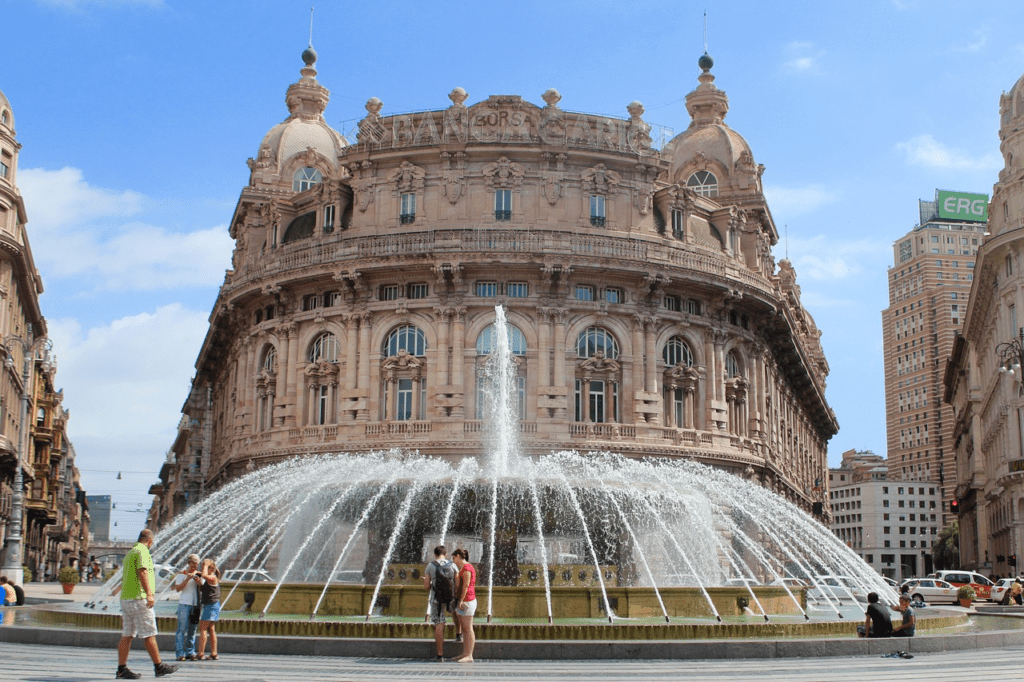
Genoa is not as well known as other large cities in Italy, but it is quite rich in architecture and art. If you enjoy a walk around and explore your style of travel, I would recommend Boccadasse. Boccadasse is formerly a fishing village in Genoa that has turned into a colorful auburn that makes a great walk along the coast.
There are also many historical landmarks and buildings in the city. The best place to start is from the city center and go to locations such as the Piazza Raffaele De Ferrari.
Cinque Terre (1-2 days):
Cinque Terre is the name for a group of 5 small villages along the coast. It has become quite popular over the years as a wonderful hike and place to take amazing pictures.

Seeing the colorful buildings makes walking the trail between them a must do. You can walk all the trails between the towns in under 5 hours. If you’re backpacking across Italy and are up for the challenge, you could take the first bus or train to Monterosso and hike through all five cities and end in Riomaggiore.
If for any reason you’re not up for the whole hike, no worries! You can take a train between any of the towns or pay for a day pass to use the train system between all 5 locations.
I would recommend a one night stay to give yourself either a break between your hiking or as a nice rest after walking all day. Aside from the spectacular views and amazing pictures you’ll be able to take, there isn’t as much to do in Cinque Terre.
Bergamo (1 day):
If you decide to skip the Liguria region, you can take a train or bus straight from Milan to Bergamo. Bergamo is a short trip from Milan that is on the way to the next large stop, Verona.
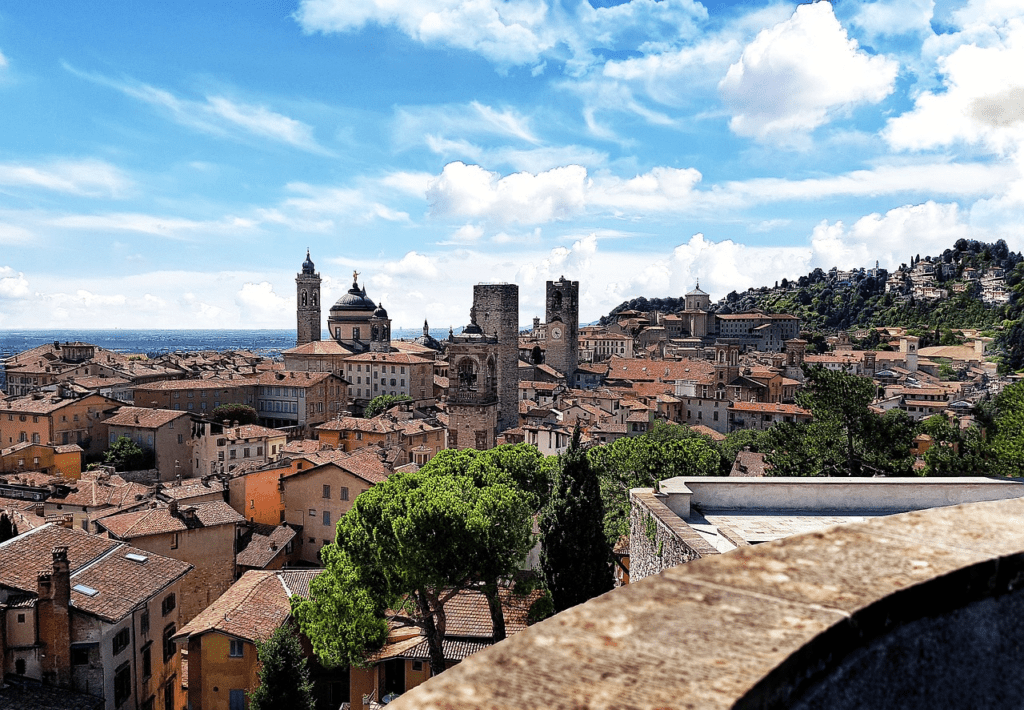
If you did enjoy the scenic route along the Italian Riviera, a bus to Verano will typically have a layover in Bergamo. I would take at least a few hours to explore before sitting in a bus for a few more hours.
It is a really charming town just 40 minutes from Milan. You can walk around the main attractions in a day. I would just walk around and explore, but for a more in depth list of things to see in Bergamo, I would visit this post from a local. https://asprinkleofitaly.com/how-to-spend-one-day-in-bergamo/
Verona (1-2 days):
The city is famous for Shakespeare’s Romeo and Juliet. Okay, so you don’t care about some romance story written hundreds of years ago. Fair enough.
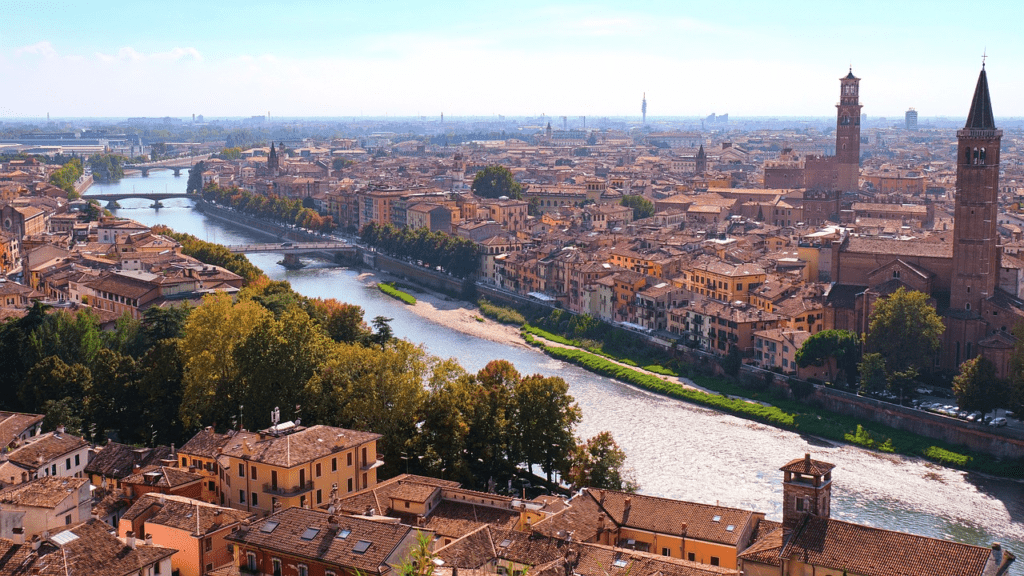
Verona is still a great stop towards the Dolomites, giving you the last chance of preparing for a city before traveling to the rural mountains. The city is not massive like Milan or Venice, but it’s still big enough to have things to do and amenities that will help with your travels.
It’s a pedestrian friendly layout that makes it easy to walk around or take a bicycle and explore. Verona has the feel of a “little Rome” with much Roman era architecture still present. There are many attractions to see such as Juliet’s house, Verona Arena, and the Duomo of Verona.
Florence:
Rome:
Dolomites (x days):
Dolomites are breathtaking. The area does not look or feel like the rest of Italy. It looks a lot more like Switzerland. And like Switzerland, you will hear a multitude of languages in the area.

As you can imagine with a mountainous area, summer would be your best time to visit for hiking.
So, what’s the catch? A beautiful view of the mountains in Italy that feels unlike anything else. Well, you’ll also have to deal with the hardships of rural areas such as a small selection of accommodation, and limited public transportation.
If you are traveling with a partner or group, you’ll have no problem finding affordable accommodation that would come out to around the median cost of a hostel elsewhere in Italy. As for transportation, if you want to make it to some of the best areas in the Dolomites such as the Tre Cime di Lavaredo loop, you’ll have to rent a car or find a ride to share.
As for things to do in the area, hiking during the summer will create memories that will last a lifetime. For a hiking guide, read this guide.
